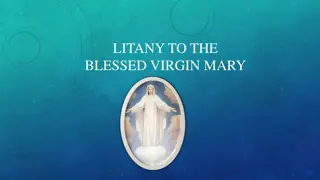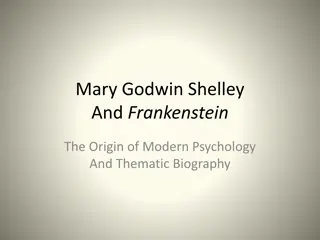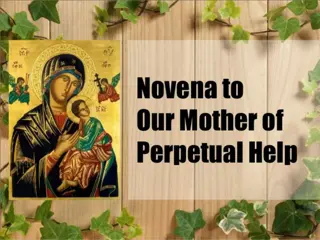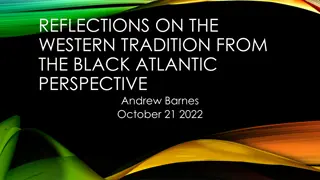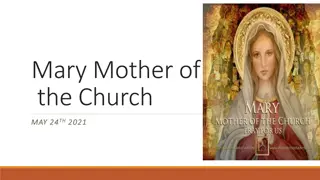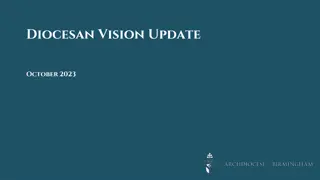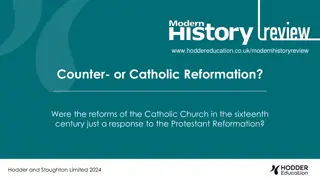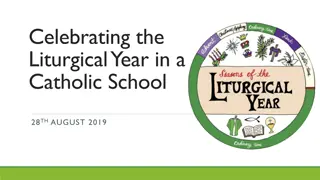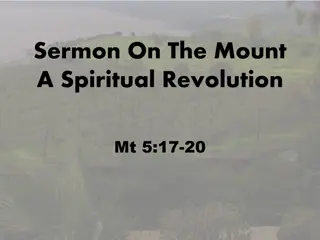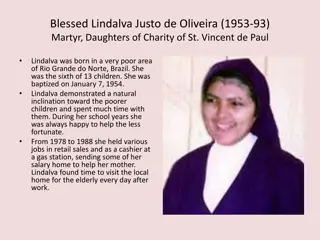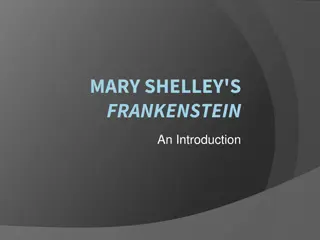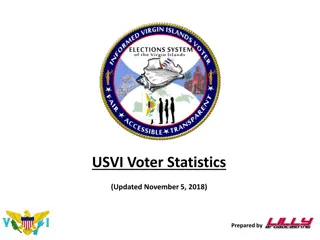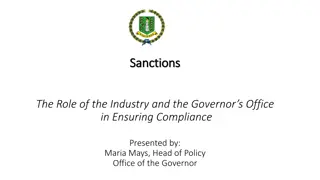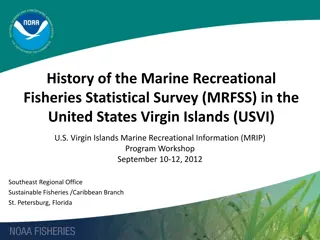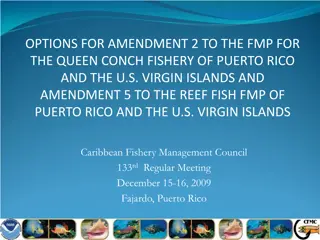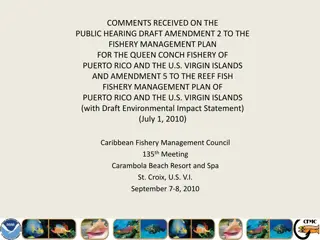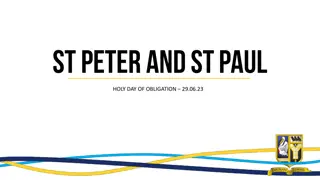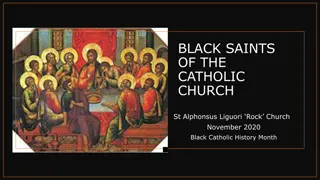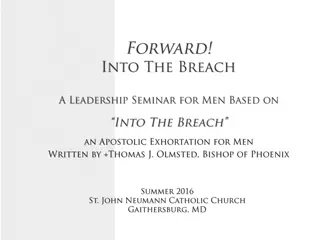The Blessed Virgin Mary in Catholic Tradition
Prophesied in the Old Testament and revered in Catholic tradition, the Blessed Virgin Mary holds a firm place as the Mother of God. Explore the four Marian dogmas and learn about Mary's unique relationship to Jesus, her sinlessness, divine maternity, immaculate conception, perpetual virginity, and bodily assumption.
Download Presentation

Please find below an Image/Link to download the presentation.
The content on the website is provided AS IS for your information and personal use only. It may not be sold, licensed, or shared on other websites without obtaining consent from the author. Download presentation by click this link. If you encounter any issues during the download, it is possible that the publisher has removed the file from their server.
E N D
Presentation Transcript
The Blessed Virgin Mary And a great sign appeared in heaven, a woman clothed with the sun, with the moon under her feet, and on her head a crown of twelve stars -Rev. 12:1 "You alone and your Mother are more beautiful than any others, for there is no blemish in you nor any stains upon your Mother. Who of my children can compare in beauty to these?" -St. Ephraim the Syrian, Nisibene Hymns 27:8 (A.D. 361)
Prophesied in the Old Testament Immediately after the Fall of man, God promised a coming Redeemer, a Seed, who would destroy the evil one (Gen. 3:15) Mary is this woman prophesied, and the Seed is Christ. The Old Testament is full of symbols of Mary: Sarah, Hannah, Ruth and Bathsheba all prefigure Mary in certain ways. Especially noteworthy are Jael, the woman of Thebez, Judith and Esther, all of whom struck down their more powerful male aggressors by destroying their heads, as was prophesied of Mary in Genesis 3:15.
A Firm Place in Catholic Tradition "In heaven", St. Ambrose tells us, "she leads the choirs of virgin souls; with her the consecrated virgins will one day be numbered." St. Augustine in a famous passage (De nat. et gratis, 36) proclaims Mary's unique privilege of sinlessness. In St. Ephrem s hymns on the Nativity (6) we read: "Blessed be Mary, who without vows and without prayer in her virginity conceived and brought forth the Lord of all the sons of her companions, who have been or shall be chaste or righteous, priests and kings. Who else lulled a son in her bosom as Mary did? Who ever dared to call her son, Son of the Maker, Son of the Creator, Son of the Most High?
The Four Marian Dogmas There are four dogmas that are formally taught regarding the Blessed Virgin Mary. Divine Maternity Immaculate Conception Perpetual Virginity Bodily Assumption These dogmas exist not because Mary is an end in herself, but because of her unique relationship to Jesus, her Son. These dogmas act as a hedge to safeguard the dogmas we believe about Christ.
Mother of God Mary s divine maternity is the dogma from which all of the Marian dogmas and devotions flow; as a human being, she is exactly like us, but as the chosen mother of the Word Incarnate, she is utterly unique. The Motherhood of Mary was formally taught by the Council of Ephesus (431), at which the heretic Nestorius was condemned and Mary was proclaimed Theotokos, the God Bearer. It does not mean that Mary is before God, that she somehow created God, or that she gave birth to the Trinity, nor is she the source of God s power. The phrase means that she was the mother of Jesus, who was a Divine Person. Insomuch as, by the union of Christ s divine and human natures, she gave birth to Christ it can truly be said that she gave birth to God because Christ is God and she is truly His mother.
Immaculate Conception Mary was conceived without original sin. Also implied in this teaching is its consequent, that she committed no actual sin during her life. The doctrine was defined by Pius IX in the bull Ineffabilis Deus of 1854, in which he stated that: "We declare, pronounce, and define that the doctrine which holds that the most Blessed Virgin Mary, in the first instance of her conception, by a singular grace and privilege granted by Almighty God, in view of the merits of Jesus Christ, the Savior of the human race, was preserved free from all stain of original sin, is a doctrine revealed by God and therefore to be believed firmly and constantly by all the faithful."
Immaculate Conception This grace was given to her from the first instance of her conception. There was never a time when Mary was tainted by sin. As Christ, though born of woman, was immune from the effects of original sin because of His unique role in the redemption of mankind, this prerogative was also extended to His mother, who had a similar, but relative role. It is a singular grace and privilege ; this explicitly affirms that Mary did not earn this grace: it would be impossible for her to do so since it was given to her from her conception and also because no human could merit such a grace; it had to be a divine gift. It was given in view of the merits of Jesus Christ. This grace was given both in anticipation of the merits of Christ (Mary, like everybody else, is saved by Jesus death on the cross) and to befit the birth of the Divine Word, who is Christ.
Perpetual Virginity Mary remained a Virgin before, during and after the birth of Jesus. This belief has always been held by the Catholic Church (in the Latin West and the Greek East) and was not seriously challenged until after the Reformation in 1517. Even many of the Reformers (Lutherm Calvin, Zwingli) believed in the perpetual virginity and held it as a biblical teaching. Her perpetual virginity flows from her dignity of bearing the Incarnate Word in her womb.
Perpetual Virginity St. Athanasius (c. 360) "Let those, therefore, who deny that the Son is by nature from the Father and proper to his essence deny also that he took true human flesh from the ever-virgin Mary" (Discourses Against the Arians 2:70). St. Augustine (c. 410) "It was not the visible sun, but its invisible Creator who consecrated this day for us, when the Virgin Mother, fertile of womb and integral in her virginity, brought him forth, made visible for us, by whom, when he was invisible, she too was created. A Virgin conceiving, a Virgin bearing, a Virgin pregnant, a Virgin bringing forth, a Virgin perpetual. Why do you wonder at this, O man?" (Sermons 186:1 [A.D. 411]).
Bodily Assumption This dogma was defined by Pope Pius XII in 1950 in the encyclical Munificentissimus Deus. The Assumption, as defined by the encyclical, means that the Immaculate Mother of God, the ever Virgin Mary, having completed the course of her earthly life, was assumed body and soul into heavenly glory (MD The fact of Mary s Assumption comes from the reality of her sinlessness. Sin is what leads to death, and bodily assumption into heaven is always a sign of closeness to God (as with Enoch and Elijah in the Old Testament). Since Mary, like Christ, had no sin, it was unnecessary for her body to suffer decay in the tomb.
Bodily Assumption St. John Damascene taught: "It was fitting that she, who had kept her virginity intact in childbirth, should keep her own body free from all corruption even after death. It was fitting that she, who had carried the Creator as a child at her breast, should dwell in the divine tabernacles." (Encomium in Dormitionem n. 14) Note that the dogma of the Assumption does not address the question as to whether or not Mary actually died or was assumed alive like Enoch. An early tradition says that she did indeed suffer death, in order to be conformed to the image of her Son. It is important when speaking of the Assumption to note that never has any city or Church in Christendom claimed to be the final resting place of her bones.
Marian Devotion Marian devotion is essentially Christocentric in character, as its end is closer union with Christ a better understanding of the mysteries of the faith, a deeper appreciation of the acts of the Blessed Trinity in salvation history. Pope John Paul II in Rosarium Virginis Mariae (2002) taught that Marian devotion is a devotion directed to the Christological center of the Christian faith, in such a way that when the Mother is honoured, the Son ... is duly known, loved and glorified (Rosarium Virginis Mariae, 4). Pope Paul VI likewise taught that all authentic Marian prayer ought to be Christocentric and Trinitarian (Marialis Cultus, 24 [1974]).
Marian Apparitions In evaluating apparitions and their messages, we must remember that they are private revelation and not on par with the public teaching of the Church. Some of the more famous apparitions that have been approved by the Church include but are not limited to: Guadalupe, Mexico (1531) Lourdes, France (1858) Knock, Ireland (1879) Fatima, Portugal (1917) In saying an apparition is approved , the Church does not affirm the truthfulness of everything the apparition claims to say an apparition is approved means that there is nothing contrary to faith or morals in the apparition and that the apparition appears to be of a supernatural character. The Church never uses the content of private revelations to establish public doctrine.
Conclusion To the Catholic, Mary is but a means to an end, a path that leads one to the presence of Jesus more surely. She is not an end in herself. Nevertheless, she did (and does) participate in our salvation in a unique way and as such deserves a special type of honor (hyperdulia).
Lesson content courtesy of www.unamsanctamcatholicam.com Power Points prepared by Catholic Presentations


